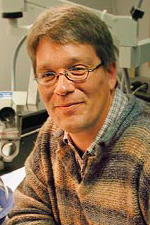 William D. Gore was appointed as the 29th Sheriff of San Diego County on July 3, 2009, and elected a year later in June 2010. Sheriff Gore oversees one of the largest Sheriff’s Departments in the nation: with 4,000 employees, an annual budget of over $600 million, and a service area of over 4,200 square miles extending to a 60 mile international border. Along with patrol and investigative operations, his department provides air support, search and rescue service, and forensic support for the San Diego region. His department operates seven detention facilities countywide.
William D. Gore was appointed as the 29th Sheriff of San Diego County on July 3, 2009, and elected a year later in June 2010. Sheriff Gore oversees one of the largest Sheriff’s Departments in the nation: with 4,000 employees, an annual budget of over $600 million, and a service area of over 4,200 square miles extending to a 60 mile international border. Along with patrol and investigative operations, his department provides air support, search and rescue service, and forensic support for the San Diego region. His department operates seven detention facilities countywide.
Sheriff Gore is well known for his regional approach to law enforcement and for his energetic deployment of technology to the front lines of enforcement. He spearheaded the creation of the Regional Terrorism Threat Assessment Center (RTTAC) and a Rapid Response DNA Team that uses forensic DNA to solve property crimes. He created a Border Crimes Initiative, including Operation Stonegarden, recognized nationally for its effectiveness in addressing border crime. A champion of Intelligence-Led Policing, he has increased the department’s reliance on the work of its Crime Analysis Team to strengthen the Department’s crime prevention efforts and assist in the swift apprehension of criminals when prevention fails.
Sheriff Gore’s law enforcement career spans over 40 years. He spent 32 years in the FBI, where he rose to the level of Assistant Director. He served as Special Agent in Charge (SAC) of the Seattle and San Diego Field Divisions, where he implemented the FBI Cyber Crime Squad and Joint Terrorism Task Force. He played a significant role in establishing the San Diego Regional Computer Forensics Laboratory, the first of its kind in the United States. After retiring from the FBI, Sheriff Gore served as Special Advisor and Chief Investigator to the San Diego County District Attorney. In 2004, he was appointed by Sheriff Bill Kolender to serve as Assistant Sheriff over the Law Enforcement Services Bureau and then as Undersheriff, where he was responsible for the day-to-day operations of the Department.
Sheriff Gore is a member of the San Diego County Police Chiefs’ and Sheriff’s Association, board member of the San Diego Crime Victims Fund, past board member of the California Peace Officers’ Association (CPOA), and a member of the San Diego Rotary Club. He has been the recipient of numerous awards and commendations including the Arthur E. Hughes Career Achievement Award from his alma mater, University of San Diego (2002). He was selected as “Headliner of the Year” by the San Diego Press Club (2001). President Clinton designated him as a Meritorious Executive in Senior Executive Service (2000).
Sheriff Gore, a San Diego native, holds a Master’s degree in Public Administration from Seattle University and a Bachelor of Arts degree from the University of San Diego.
Sheriff Gore’s family is rich in law enforcement experience. His father and older brother were a part of the San Diego Police Department and his middle brother was a San Diego County Deputy Sheriff. His wife was one of the first female FBI agents in the United States.
Sheriff Gore and his wife, Natalie, have a grown son who lives in Arizona.




